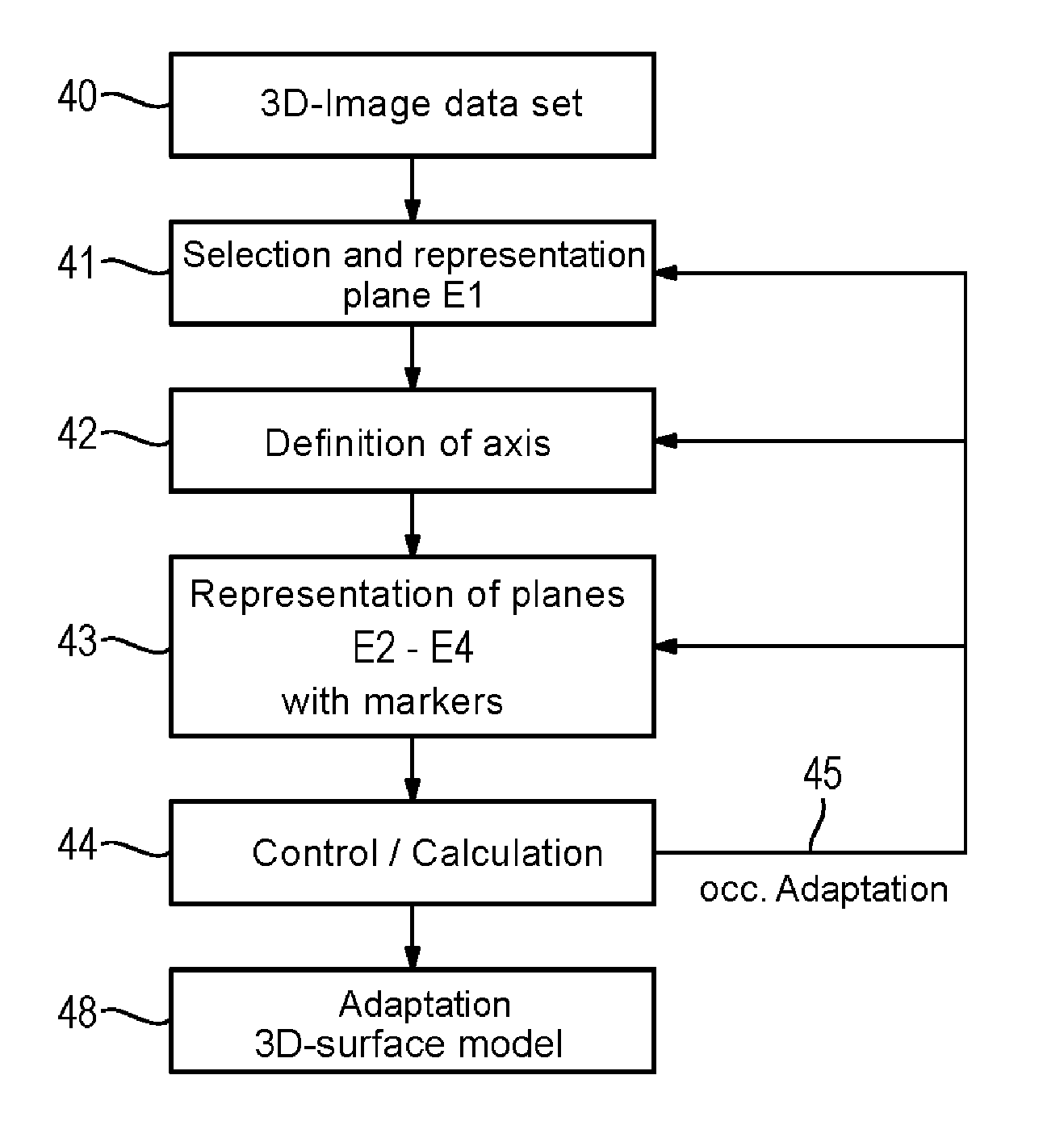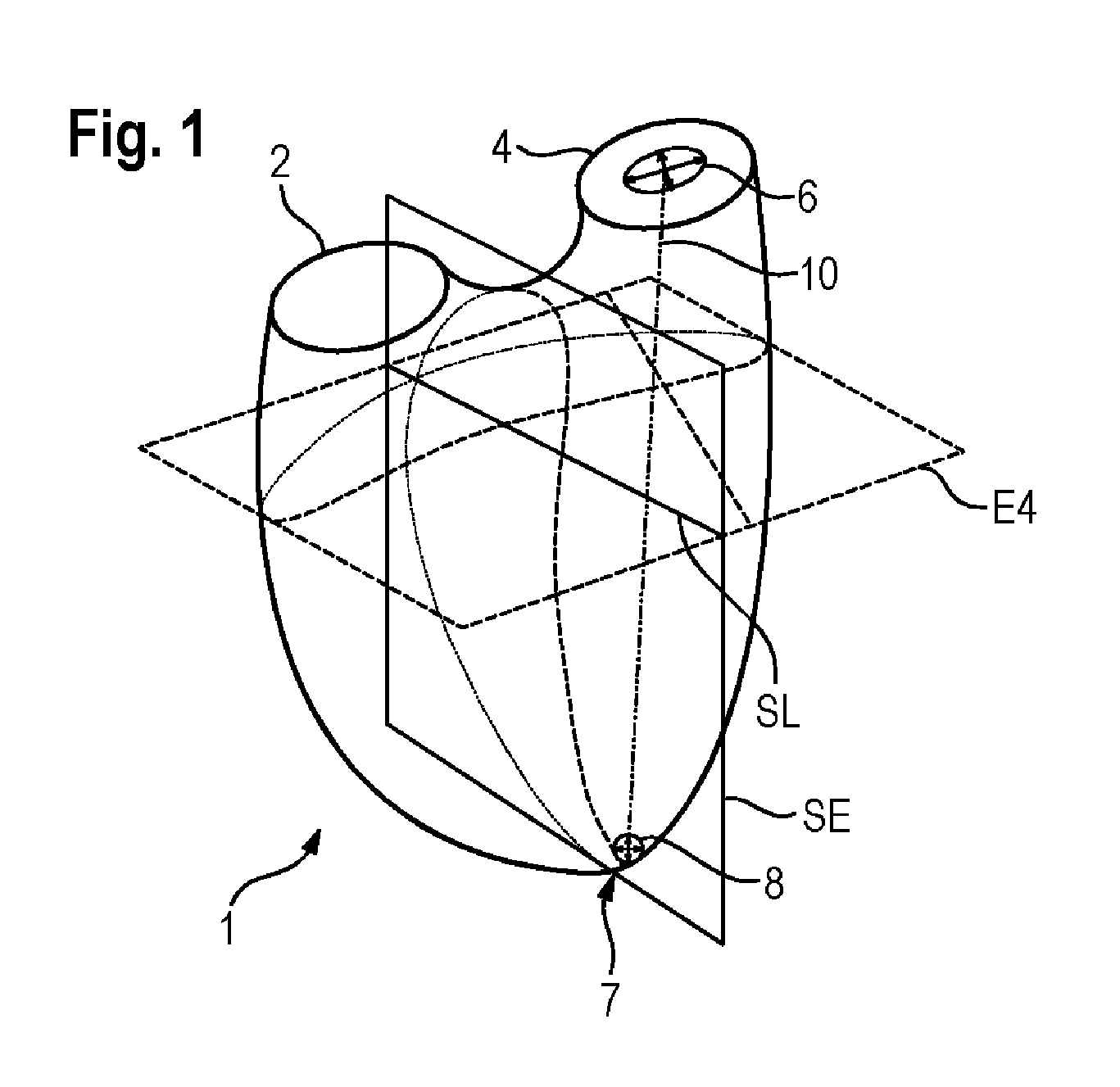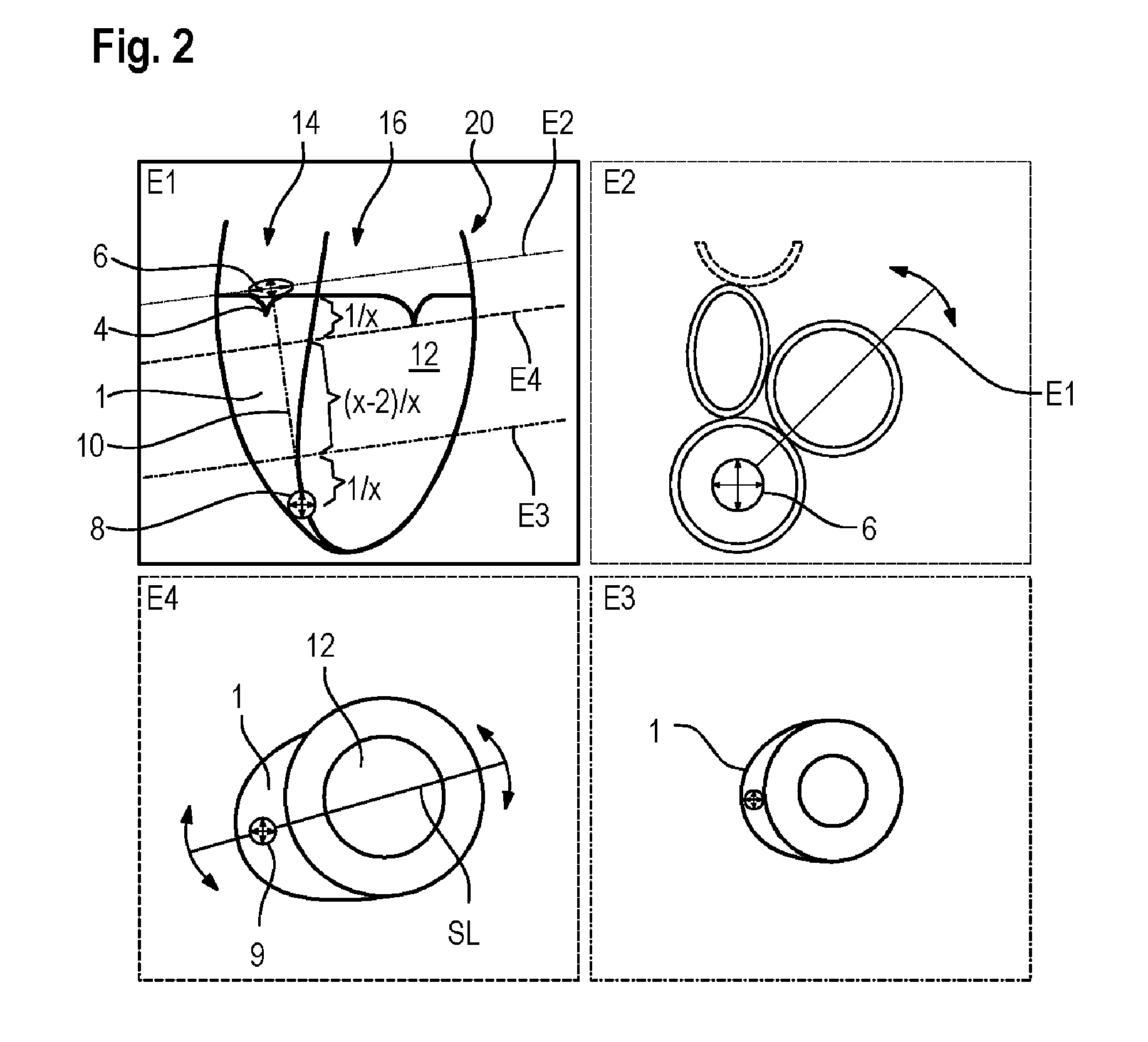Adaptation of a 3D-surface model to boundaries of an anatomical structure in a 3D-image data set
a 3d surface model and data set technology, applied in image enhancement, image analysis, instruments, etc., can solve the problems of user requirements, time-consuming methods, and costly acquisition of magnetic resonance tomography images, and achieve the effect of facilitating the adaptation
- Summary
- Abstract
- Description
- Claims
- Application Information
AI Technical Summary
Benefits of technology
Problems solved by technology
Method used
Image
Examples
Embodiment Construction
[0047]For the sake of improved orientation FIG. 1 shows a schematic drawing of a right ventricle 1. The latter generally is nestled to the larger left ventricle thus showing a relatively complex bag-like shape. The pulmonic valve 2 and the tricuspidal valve 4 can be seen basally, the apex which is referred to as 7 can be seen apically. The right ventricle 1 approximately is mirror-symmetrically arranged about the plane of symmetry SE. This plane of symmetry SE thus shall preferably be defined by the process according to the invention, since the surface model may be oriented in relation to it. Initially the axis 10 is defined, which extends between the tricuspidal valve (TV) 4 and the apex 7. The axis 10 is depicted as a dot-dashed line. The tricuspidal valve 4 is marked by the TV marker 6, marking the starting point of the axis. At the apex another marker 8 is defined, i.e. the apex marker.
[0048]Furthermore in FIG. 1 one of the viewing planes, herein the fourth viewing plane E4, is ...
PUM
 Login to View More
Login to View More Abstract
Description
Claims
Application Information
 Login to View More
Login to View More - R&D
- Intellectual Property
- Life Sciences
- Materials
- Tech Scout
- Unparalleled Data Quality
- Higher Quality Content
- 60% Fewer Hallucinations
Browse by: Latest US Patents, China's latest patents, Technical Efficacy Thesaurus, Application Domain, Technology Topic, Popular Technical Reports.
© 2025 PatSnap. All rights reserved.Legal|Privacy policy|Modern Slavery Act Transparency Statement|Sitemap|About US| Contact US: help@patsnap.com



